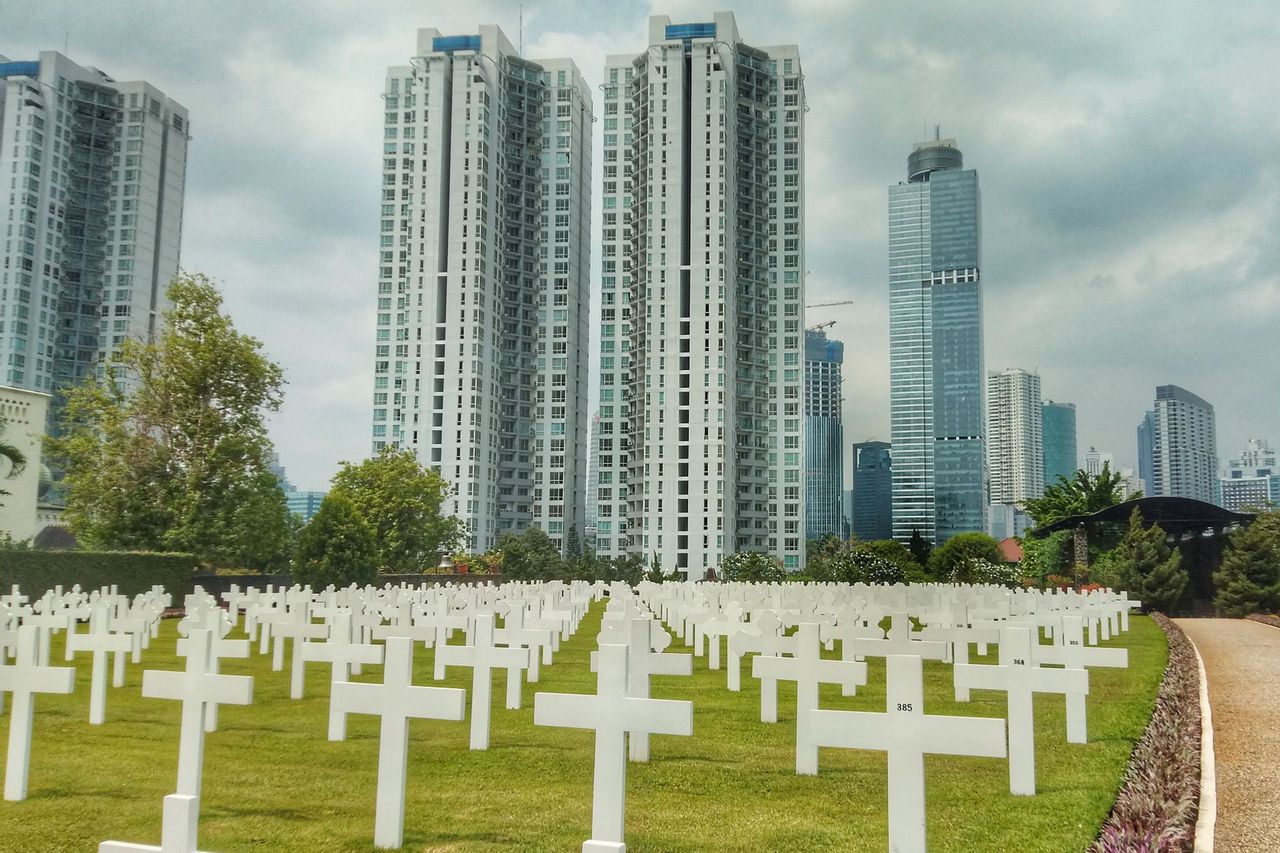How The Dutch Cured The Grief Of The Second World War

JAKARTA - The second world war spreads sorrow to all corners of the world because it killed more than 62 million people, including the Dutch, who at that time colonized Indonesia. The Dutch government has its own way of treating their grief.
They established the first 22 honorary burials for victims of the second world war in Indonesia. Time passed, several tombs were put together, leaving 7 tombs scattered only on the island of Java.
Currently, the seven grave sites belong to the Dutch embassy in Indonesia as the waqf lands of the old Dutch East Indies government. The grave is managed by the Oorlogs Graven Stichting (OGS) war victims funeral foundation.
One such grave is Ereveld Menteng Pulo, South Jakarta. The location is quite unique. Located around the city center, but "hidden" by the office buildings and apartments that surround it.

We visited Ereveld Menteng Pulo around 10.00 WIB, accompanied by a guide named Selma Isnaini. When opening the gates of the tomb, the first sight you see is white gravestones scattered across the green grass.
Not a single hair on the neck that stood up when we saw the expanse of the tomb. Entering the main road, a fir tree that is shorter than usual greeted us. Understandably, Jakarta's air is not suitable for this tree.
The cuts in the grass that bordered the tomb blocks appeared symmetrical. Various plants adorn the corner of the tomb area. Selma said, managers always cut the grass every 3 to 7 days.
"The managers here really pay attention to the tidiness and maintenance of the graves," said Selma.
The war victims who lay in Ereveld Menteng Pulo came from various professional backgrounds. About 80 percent of them were affected civilians, the rest were generals, Dutch soldiers, nurses, to the Koninklijk Nederlandsch Indische Leger (KNIL) or Indonesian soldiers who sided with the Dutch.

There are four types of headstone in Ereveld Menteng Pulo. A cross-shaped headstone for Christian or Catholic bodies, a three-pointed headstone for Islam, a Davidic star-shaped headstone for Judaism, and a semicircular headstone for Buddhism.
Not all bodies were identified post-war in the 19th century at that time. Because of this, their gravestone has the words "onbekend" which means unknown. In addition, there is a mass grave, which contains a number of bodies with partial body parts.
Not only that, there are several graves of small children who are buried in Ereveld Menteng Pulo. They were prisoners of the Japanese army camp.
During the Second World War, after Japan was forced to withdraw due to the Hiroshima and Nagasaki bombs, the Dutch managed to reclaim women and children prisoners from the Japanese camps.
Philosophy degrees are equal in the afterlife
In plain view, all the forms of the tomb are similar. There is no specificity for any of the tombs. In fact, if you examine it, there is one of the tombs of the supreme commander of the Dutch army in Indonesia from 1946 to 1949, he is General Simon Hendrik Spoor.
Spoor was the person who laid the foundation stone for the construction of Ereveld Menteng Pulo on December 8, 1947.
"Spoor is one of the highest Dutch generals with an army of 8000. He is the leader of the Dutch Military Aggression II which almost succeeded in recapturing Indonesia," said Selma.
There is one philosophy that was held by Spoor when he built this tomb of honor. For Spoor, blacks, whites, generals, nobles, citizens, all ranks are the same when they die. Until finally, Spoor died on May 23, 1949 and joined Erevald Menteng Pulo.
Besides Spoor, there is also the tomb of Brigadier AWS Mallaby. Mallaby was the leader of the 49th Punjab army which was influential in the November 10 battle in Surabaya. These troops are allied troops (British) who also recruited their colonies, such as India, Pakistan and Sri Lanka.
Mallaby's grave is on the allied tomb block. Although in the same complex as Erevald, this tomb block is managed by the British Embassy.
The shape of this British tomb headstone is different from the Dutch tomb. These graves are not in the form of stakes, but marble inscriptions in a horizontal position. There is the name, job title, date of death. Religious markers can be seen from the sign of the cross, star of David, or Arabic letters on the headstone.
Malaby's grave is nowhere to be found by a glance. Given, the tomb is on the left edge and protrudes slightly backward.
Tomb of the ashes in the tube
On the right side of the tomb complex, there is a building called the Columbarium. The Columbarium keeps 742 urns of Dutch military ashes who died as prisoners of war in Japanese labor camps during World War II.
"They died in Japan. Because they wanted to take them home, their bodies were cremated to make it easier for them to be transported here, they had been made into tubes," said Selma.
Once again, there is no scary impression when you are here. Remember, there is a large pond in the middle which is decorated with lotuses on the surface. Therefore, staying still in this place still feels soothing.
Next to it, there is a church. In the past, this church was often used as a place for ceremonies before the body was buried. Now, it is only used as a place for visitors who want to say prayers.
Inside the church is a large wooden cross. The cross, which was made of railroad bearings, was made to commemorate war victims who were forced by the Japanese to build a railroad in Myanmar (formerly Burma).
Every year, the Dutch Embassy holds an annual commemoration at Erevald Menteng Pulo. On August 15, which coincided with the end of the second world war, the Dutch Embassy and a number of families of war victims came to Ereveld Menteng Pulo to perform a ceremony.
